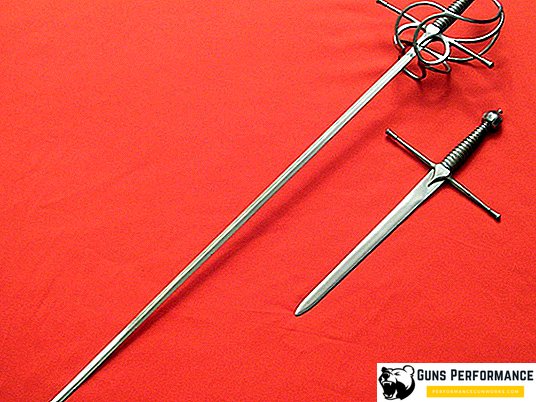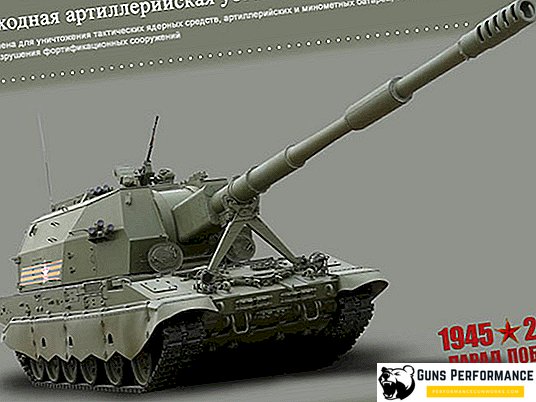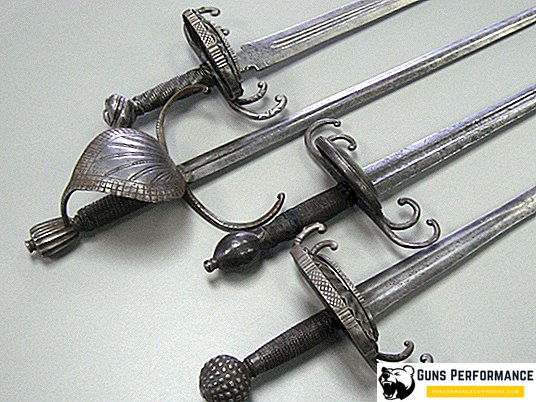
Doug is a type of European short-bladed weapon designed to strike a predominantly thrust at the enemy. This is a kind of dagger held in the left hand when fencing with a sword. The French called it dagu: "men-gosh", which means "left hand". The style of fencing, in which the fighter held a weapon in both hands, was similarly named. In fact, doug is a highly specialized edged weapon that was used as a supplement to a sword or rapier.
In Europe, the most widespread dagger dagger was in the period from XV to XVII century. It was at this time that the European nobility was overwhelmed by a bloody "duel fever", which sent thousands of young aristocrats to the grave every year. Sword and dagger ended quarrels, defended the nobility, put an end to the most complicated disputes.
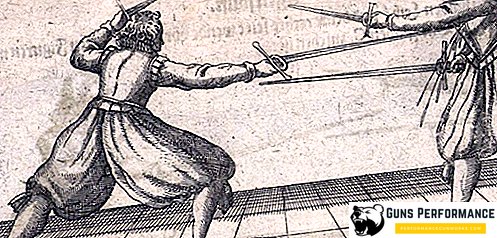
Very quickly, the dag (dagger) from the weapons of commoners became a constant attribute of the nobility. With the help of Dagi, the swordsman reflected the enemy's blows in battle, and this dagger was also an excellent tool for disarming an opponent. Currently, there are a large number of different varieties of Dag, they differ in length, shape of the blade and guard, the country of origin.
An analogue of dagi existed in Japan, it was called "sai". In form, this dagger was very similar to its Western counterpart. However, unlike the European dagger, the sai has never been a complement to other weapons. In addition, it was never used by samurai nobles. Initially it was an agricultural tool used by commoners, and later they were very willing to use ninja spies.
The origin of the weapon
Dagger - one of the oldest types of European bladed weapons. It was derived from a large knife, but later began to be used primarily for stabbing. For a long time, the nobility did not pay much attention to these weapons, regarding them as "low" weapons of commoners. However, later the situation changed: since the 13th century, the dagger has become a familiar attribute of knights, it is worn along with the sword. The fact is that this type of bladed weapon proved to be very effective against an enemy chained in armor, it could be inserted into the joint between the plates of armor or penetrated chain mail.
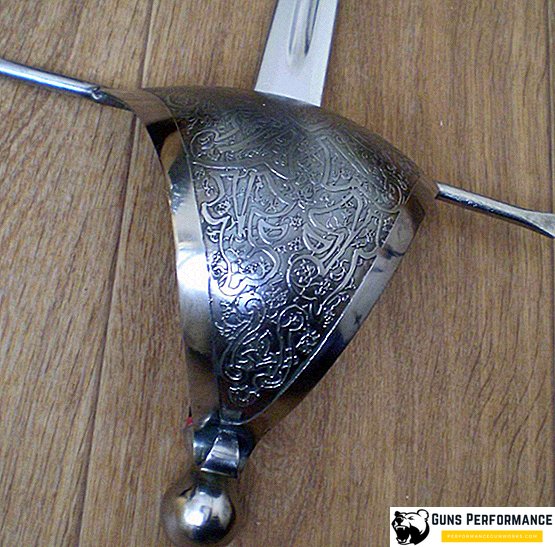
Often it was with the help of a dagger that they finished off an opponent, such a blade even bore its own name - “dagger of mercy”.
The dagger was worn on a chain or just under the belt, the sheath was not usually used. Since the advent of firearms, heavy plate armor began to gradually disappear or be replaced by lighter counterparts. At the same time, it became easier and the main weapon of the aristocracy - the sword. Thus, the sword first appeared, and then the rapier.
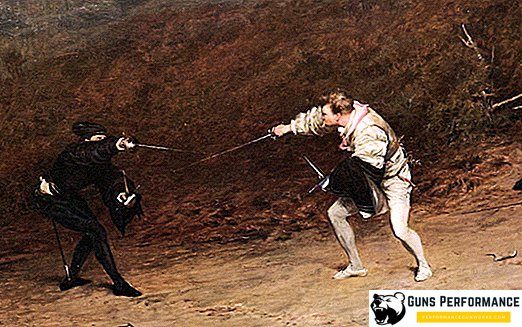
The refusal of heavy armor allowed the swordsman to move more freely in battle, to perform complex series of piercing and cutting (rather than chopping) blows. New fencing techniques appear, and the main emphasis in them is not on force, but on the speed and agility of a fighter. Each country had its own fencing school, which had its own special style and features. The Germans, for example, placed the main emphasis on slashing blows, in Italy - where fencing was considered to have originated - they preferred to strike the thrust. Most of the fencing schools of the time were taught to defend themselves and repel enemy weapons with their left hand. Often, for these purposes, they used a small punch shield (buckler), a second sword, or a cloak simply wound on the arm.
In the first half of the 16th century, the Spaniards were considered "trend-setters" in fights with swords. It was in this country that the Espada and Daga style (espada y daga) appeared. In his right hand, the swordsman held his sword and used it mainly for attacking attacks (lunges), and in his left hand was a dag, which parried the opponent's attacks. The presence of dugi significantly enriched the arsenal of the swordsman, it included double strikes with a sword and dagoy, methods of defense and simultaneous attack.
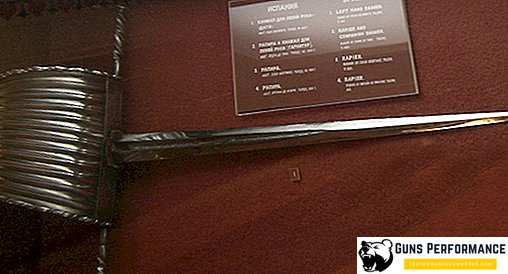
It can be said that the Dagha became a kind of replacement for the heavier shield, thus following the general vector of the development of defensive and offensive weapons of that time. However, unlike the shield, the dag was more universal: it could not only block the opponent's blows, but also be used in offensive actions, especially if the main blade was broken or knocked out of hand. As an offensive weapon, the Dagh was particularly effective at short distances.
It should be noted that the Dagh is exactly the dagger for the left hand. The Europeans clearly distinguished the usual dagger and the weapon that was used during the duel in a pair with a sword or rapier. The Germans called such a blade degen, the Spaniards and Italians called daga, and in France the name Meng-gosh strengthened with this weapon, which was a literal description of its usual use.
Doug was worn without a scabbard, just behind a wide belt on the right side. So it was easier to grab it with his left hand and parry the first blow of the enemy. In a duel, the swordsman kept the dagu with an edge towards the enemy approximately at the level of his chest or neck. To keep this weapon never used reverse grip.
What did the dagi look like?
Description and most famous varieties
Usually, the dagh had a length of 50-60 cm, of which a narrow blade accounted for about 30 cm. The latter could have a flat shape or be three or four-sided with edges about 1 cm wide. The faceted blade had a definite advantage, as it could more effectively pierce the enemy's mail coat. It should be noted that some types of dag did not have a cutting edge at all, that is, they were intended solely for delivering piercing punches.
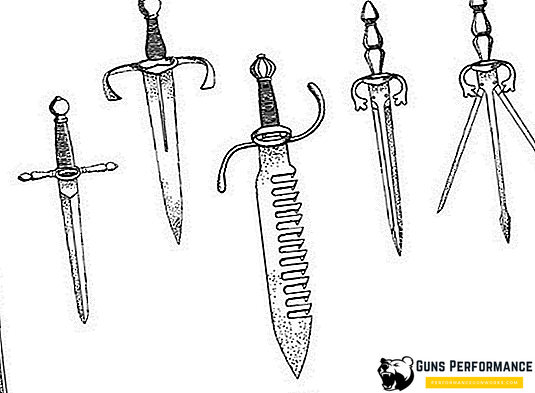
Since Doug mainly performed protective functions, hilt weapons with a massive and complex guard were especially important for this type of bladed weapon. She could have the form of a bowl or a complex interweaving of the bows. Often, the dagh had various adaptations to capture and hold the enemy blade. It could be a plate with ends curved to the tip. The blade of some dag had teeth, which were used to perelamyvaniya enemy weapons.
Due to such a wide use, a large number of varieties of dag soon emerged, differing in both appearance and country of origin.
The most famous was the Spanish Dagha, which had a developed guard with long straight arms and a shield of characteristic triangular shape, which gradually narrowed to the top of the handle. He skirted the swordsman's brush and reliably protected him from the blows of the enemy.
The Spanish Dagh usually had a flat narrow blade with one-sided sharpening, with a wide base, strongly tapering to the point. As a rule, such a weapon had a short handle, and its hilt was often richly decorated.
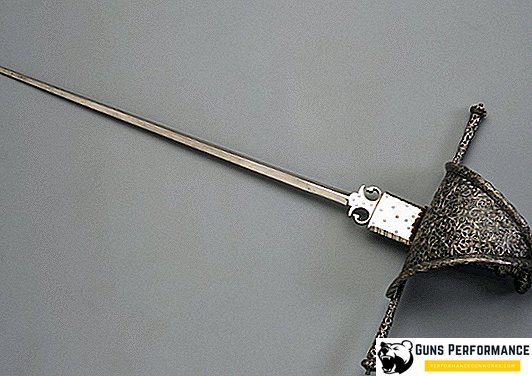
Known German Doug very curious design, which had two side blade, diverging away from the main. The side blades were fixed with a hinge, and the mechanism was driven by a spring. After pressing the button, such a dagha turned into a kind of trident with which it was possible to break the blade of the enemy's sword.
There was also a Levantine dagh, with a thumb ring, a flap and a guard with two bows. She had a blade with two blades, two valleys separated by a high edge.
Another well-known representative of this class of cold weapons is dagassa. She usually had a wide lance blade, tapering to the point. Often at the base of the blade Dagassa were special notches for the thumb and index finger. In this case, they defended themselves with bows descending to the blade. Such blades were most common in Italy in the XIV-XVI centuries.
